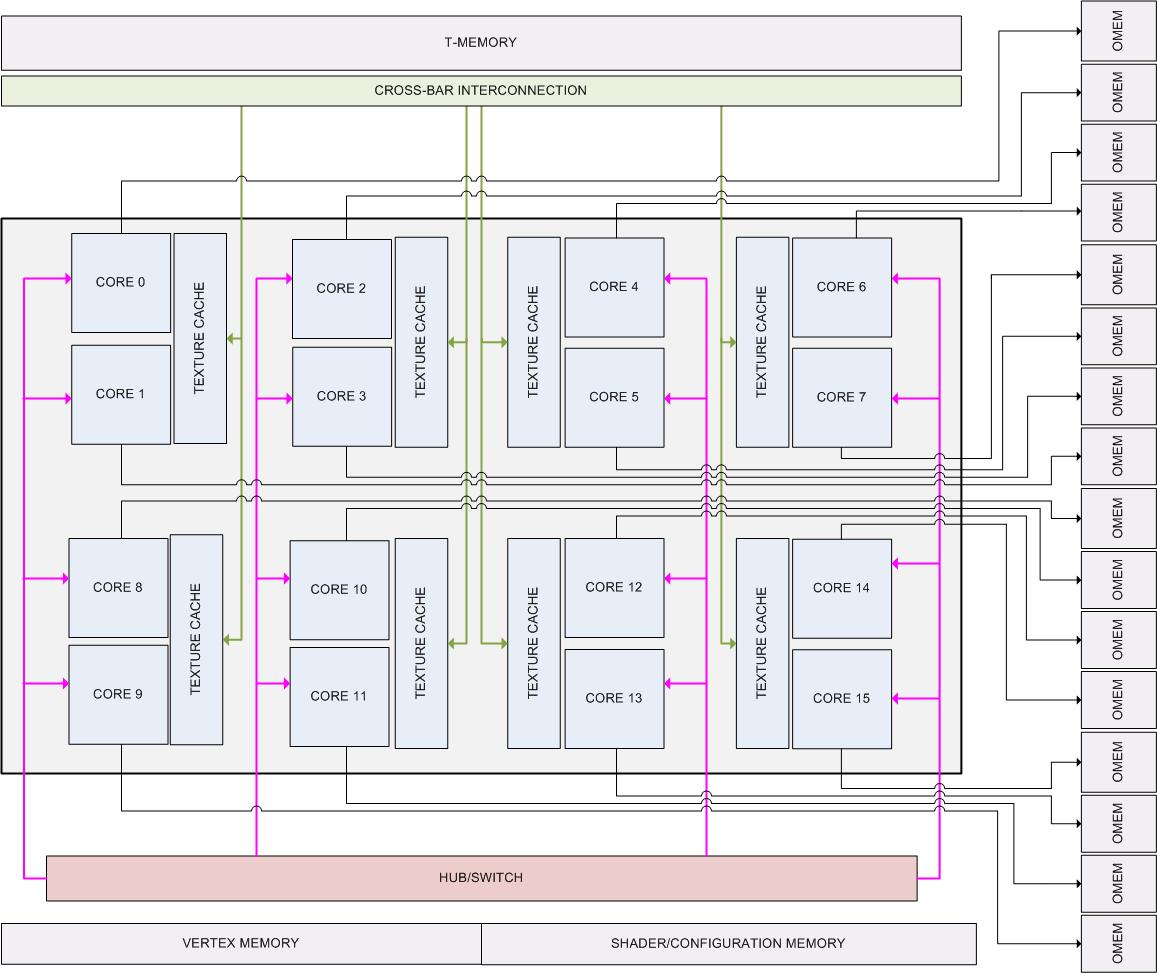Theia: ray graphic processing unit
Architecture Overview
THEIA Architecture Overview
Theia has a multicore architecture approach.
Each core is an independent physical entity, capable of performing by itself the full RENDER of an image.
Theia's architecture uses multiple cores working simultaneously, to benefit from the parallelism of ray cast.
Each core runs a local copy of the shader code, written on THEIA's assembly programming language, gets its
inputs from the T-Memory and Vertex Memory, and writes its output into one of the banks of the O-Memory.
GPU Architecture Block diagram
The Next diagram ilustrates the GPU architecure.
The previous diagram shows a configuration with 16 cores. This number of
cores may be different from the current SVN trunk, however the RTL
has been written to allow modifying this number.
VERTEX MEMORY stores the geometry primitives which describe the
scene. The HUB/SWITCH Block broadcasts the current geometry primitive
to all the cores.
T-MEMORY is an n-way interleaved memory which stores the textures
Each core has the ability to read from T-MEMORY. The cores can not
write into T-MEMORY. A Cross-Bar interconnects each core with the
T-MEMORY to maximize concurrent reads. Each pair of cores also shares
a TEXTURE CACHE to further accelerate the texture reading.
OMEM is a collection of N Memory banks, where N is equal to the
number of cores. Each core is assign a unique OMEM Bank. Each core
writes it's results into its corresponding OMEM. Each core can only
access 1 OMEM block for writing. The cores can not read from OMEM.
Each core has a local copy of the Code to execute. The internal CORE
memory is not shown for simplicity.
CORE Architecture Block diagram
Each core has the following basic building blocks.

Each core has 4 main blocks: EXE, IO, CONTROL and MEM.
MEM: Contains a Code default ROM, a user code RAM which partially or totally overwrites the ROM, as well as Registers and IO mapped memory.
EXE: Execution unit, contains Fetch unit, decode Unit, ALU and Write Back. It is Pipe-lined.
IO: Input output Unit. Implement Wishbone master and slave blocks.
CONTROL: Main control FSM for the core.

